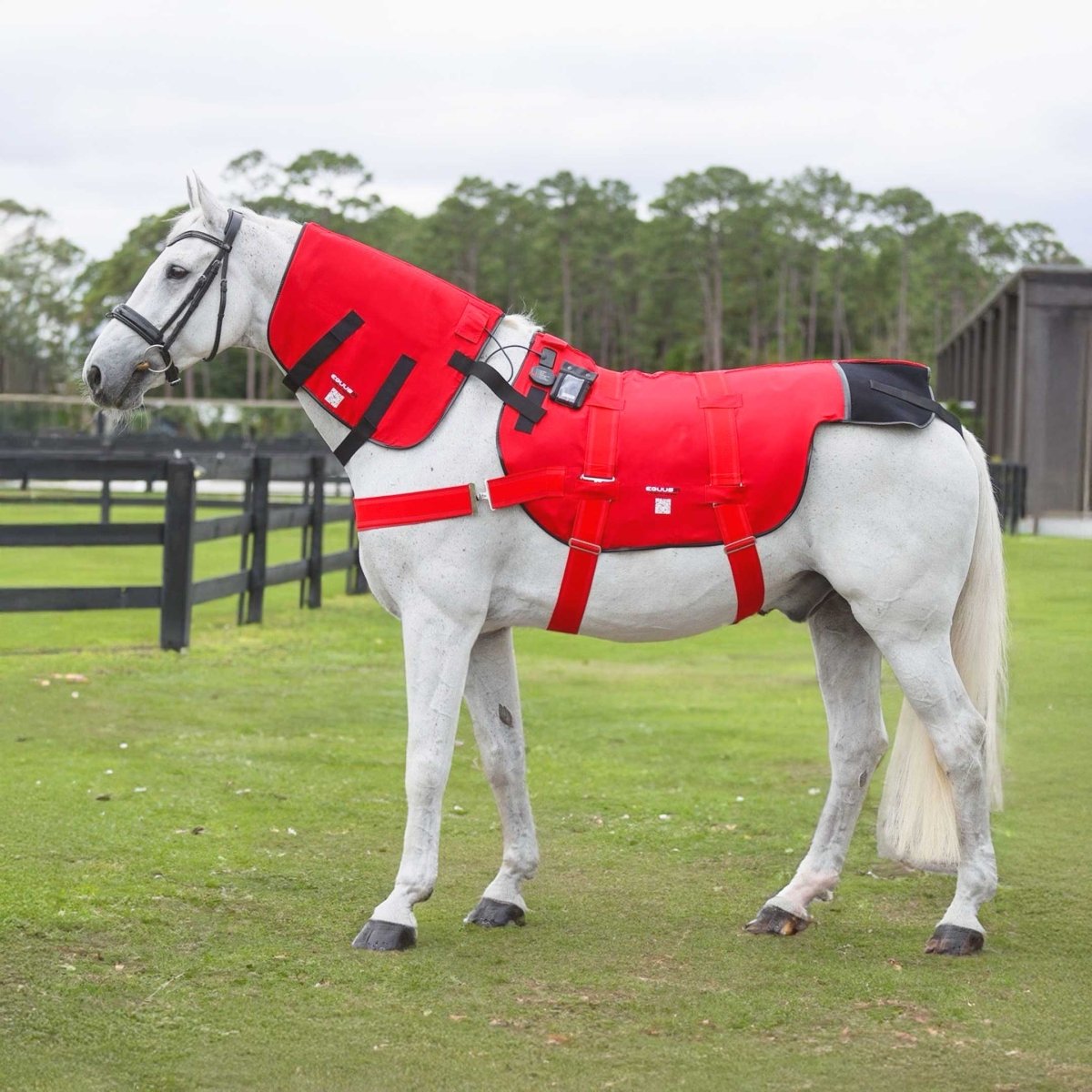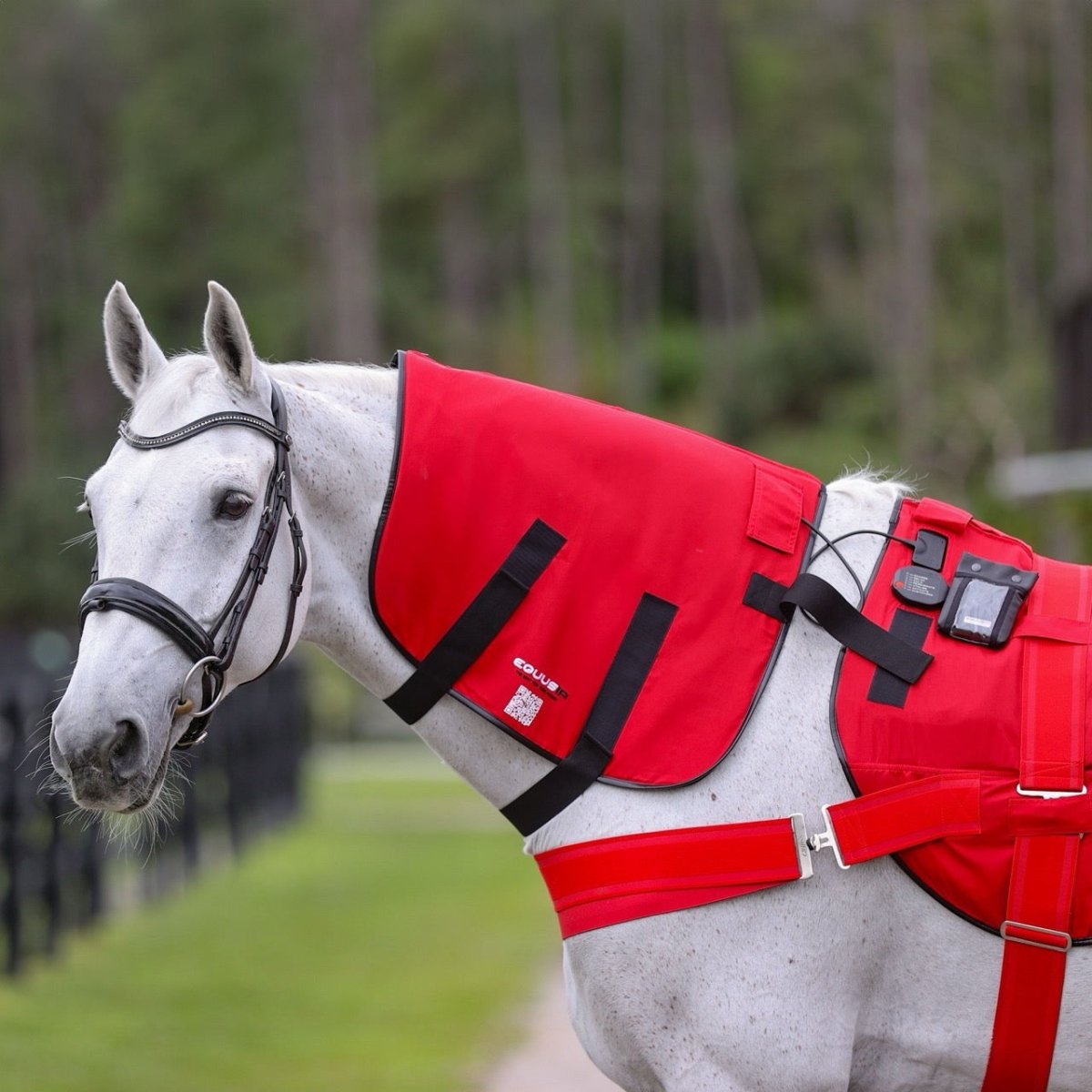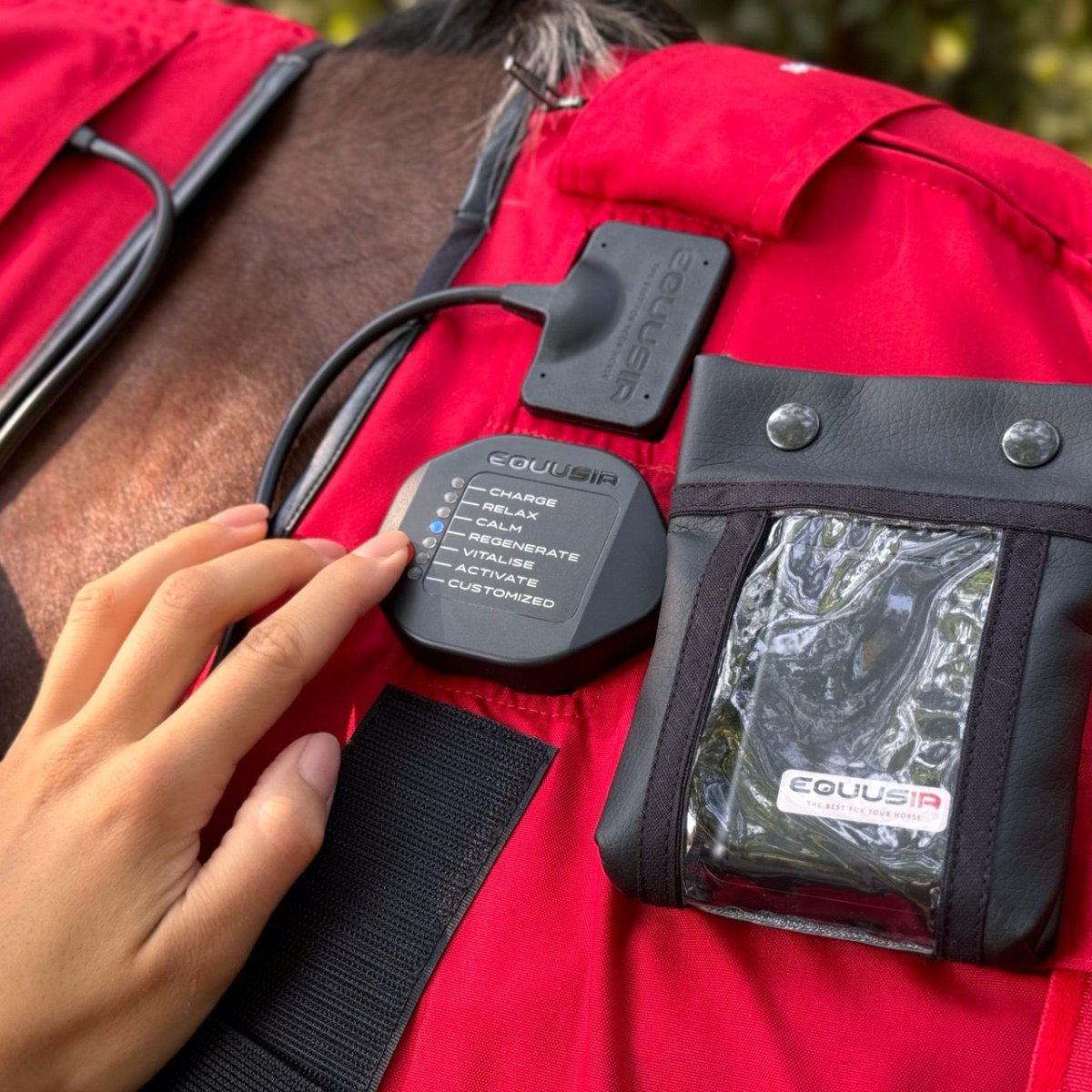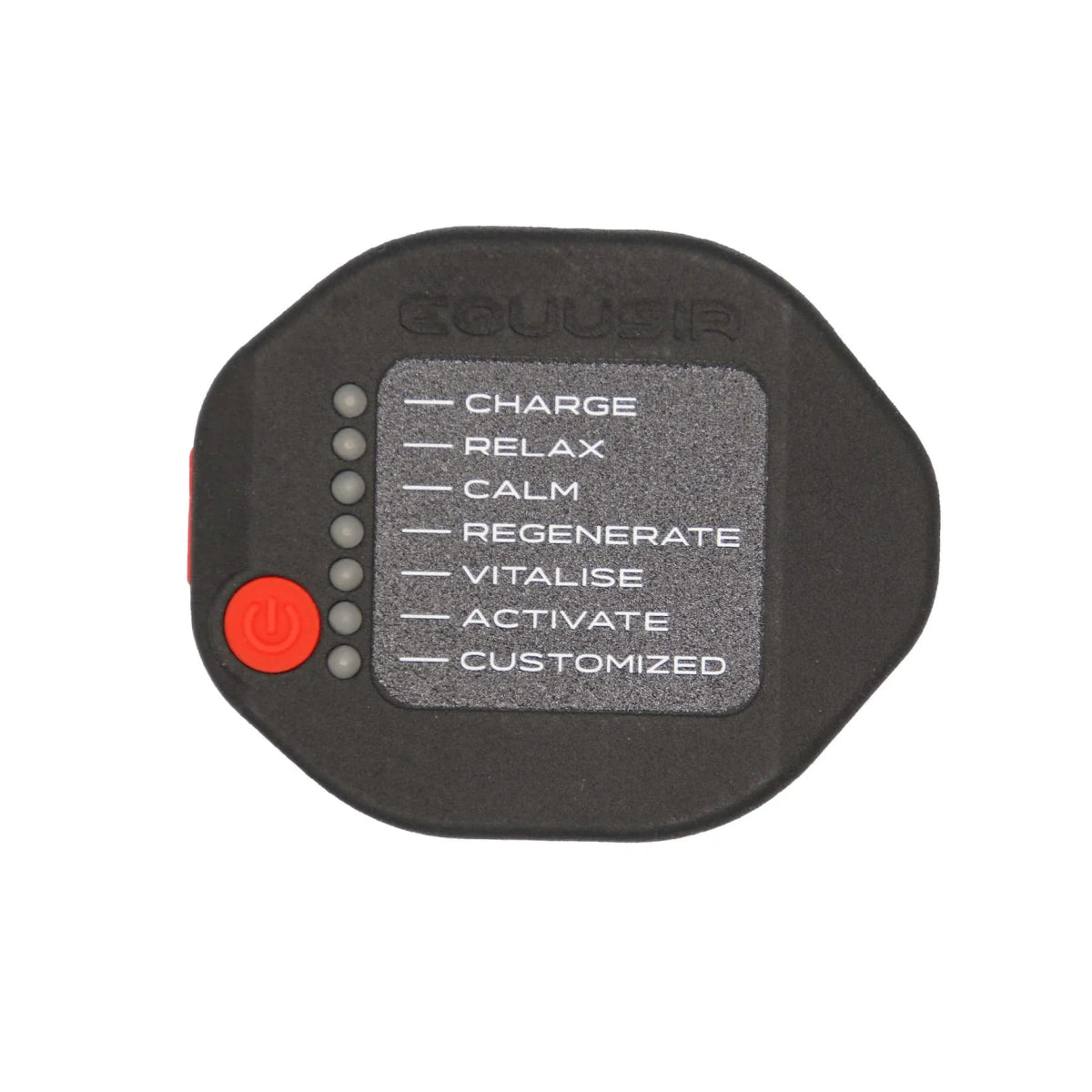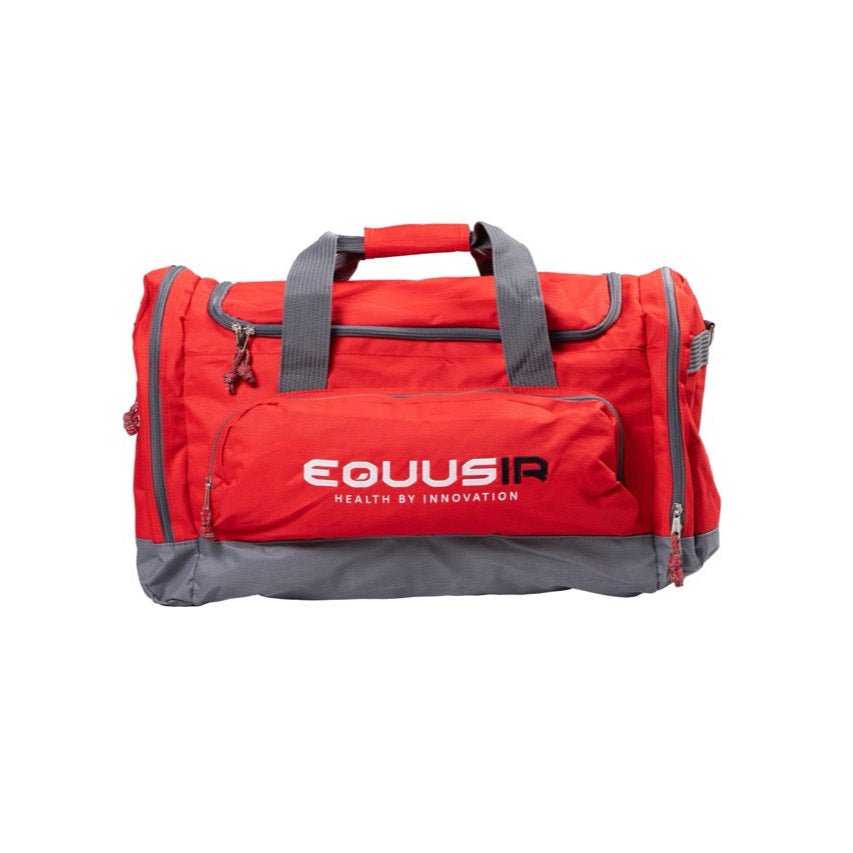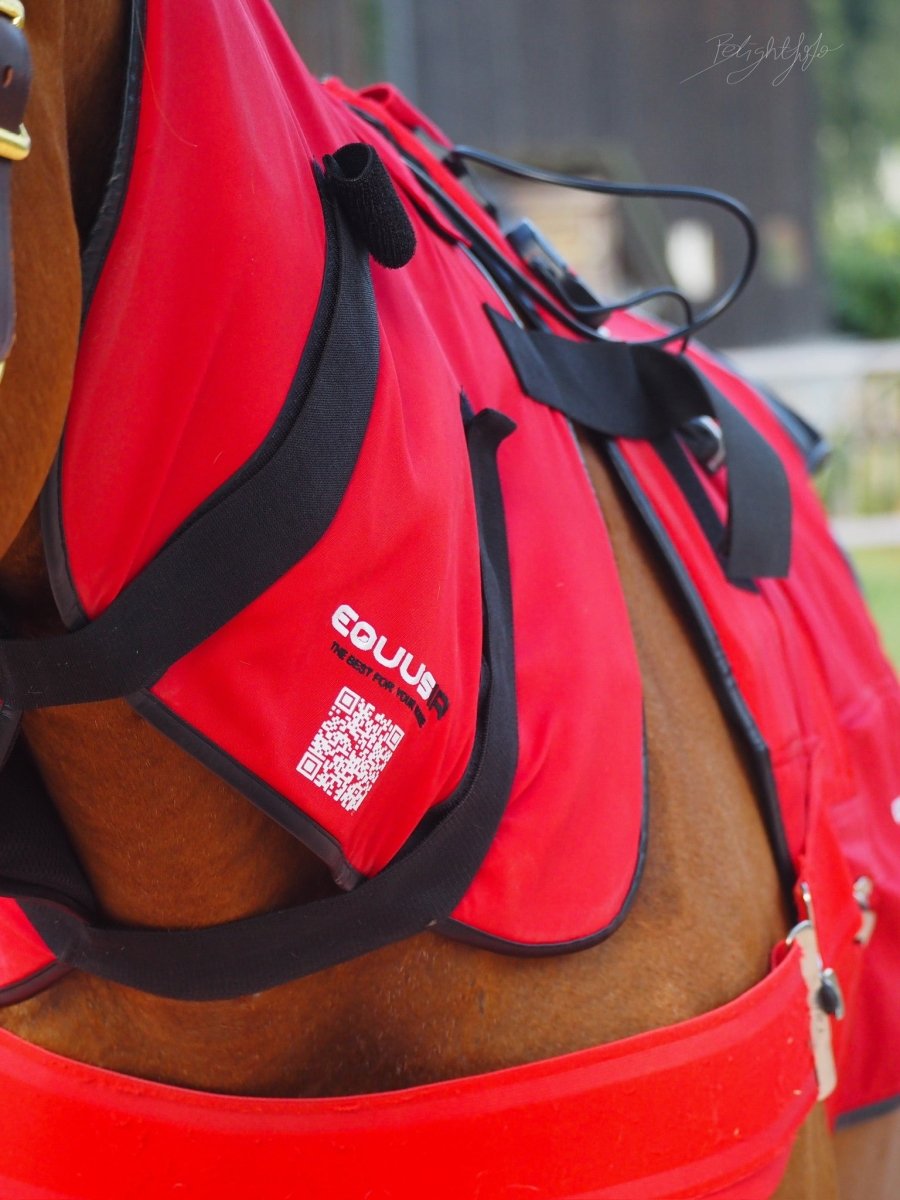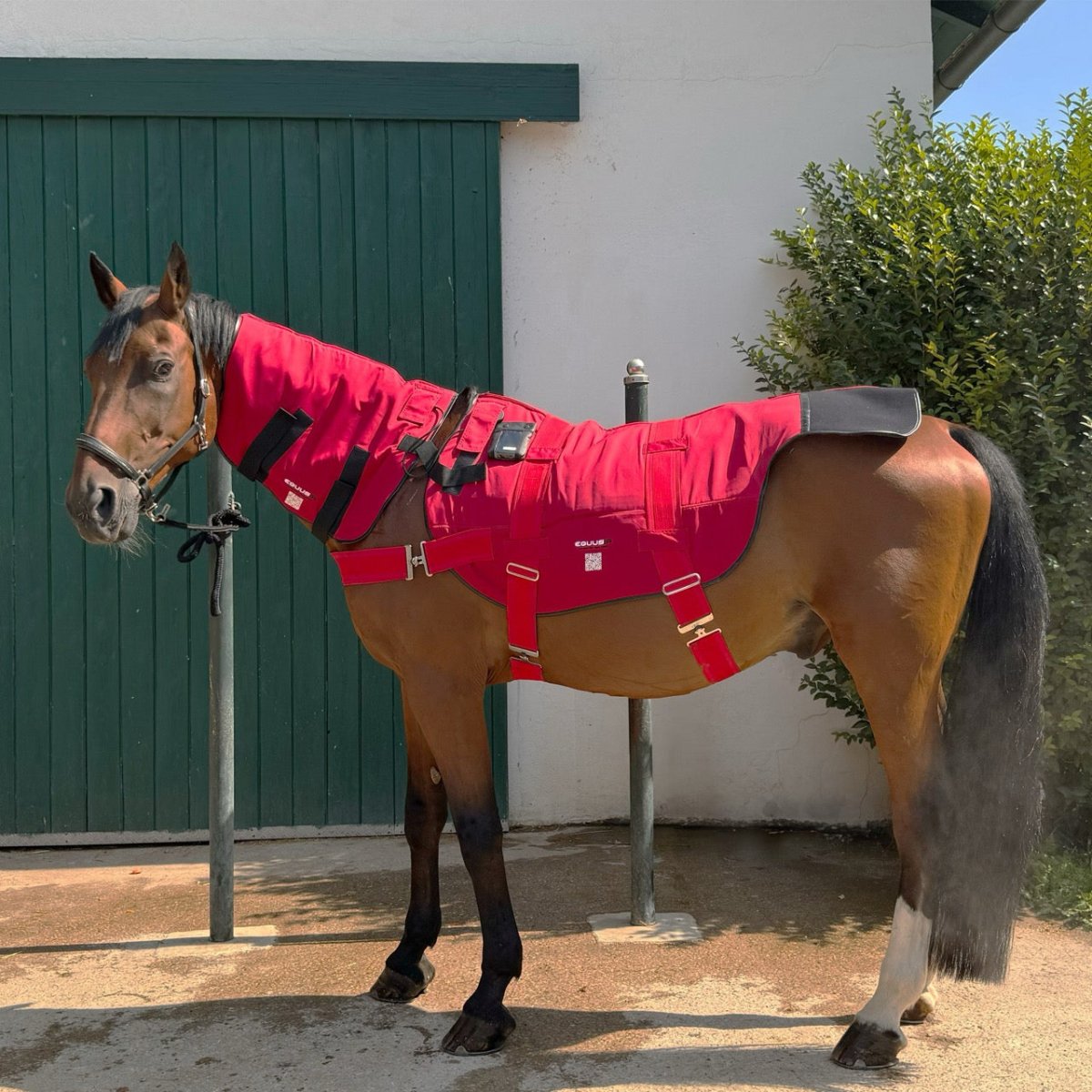
Safely through the heat: A guide for horse owners
Patricia RathgebSummer, sun, heatwave: these times can be a real strain for our horses. Find out here how we can master the hot days together without our four-legged friends suffering from the heat.
Why do horses sweat and why is that sometimes not enough?
The fact is: horses feel most comfortable at a temperature between 5-15° Celsius.
However, temperatures above 25 degrees Celsius place a considerable strain on the organism and can trigger heat stress.
That's why it's especially important to look after the well-being of our horses in the increasingly hot summer months, with many days over 30 degrees Celsius. In this article, you'll learn why heat is so dangerous for horses and how you can best protect your darling - preventively and in acute cases.
The dangers of heat for horses
Heat stress can be life-threatening for horses. Horses regulate their body heat by sweating. The evaporation of sweat cools the body surface. In extremely high temperatures or during sporting activities, this cooling mechanism may not be sufficient. Clear signs of overheating include excessive sweating, rapid pulse, increased respiratory rate, lethargy and, in severe cases, even collapse.
Horses at particular risk
Special care is required with:
- Older horses that are less able to release heat efficiently.
- Overweight horses that overheat more quickly due to their condition.
- Dark-haired horses that absorb more sun rays.
- Horses with a lot of fur , e.g. Nordic breeds or Cushing horses
- Horses with certain pre-existing health conditions that affect their ability to thermoregulate.
Prevention: The key to managing heat
Simple measures for hot days:
- Sufficient shade : Make sure there are enough shady areas available, either through natural features or through man-made shelters.
- Access to fresh water : Make sure your horse always has access to fresh, clean drinking water to prevent dehydration.
- Adapted training times : Avoid training and working in the midday heat. Use the cooler morning or evening hours instead.
- Avoid transport : Avoid transport on hot days, as air circulation in a closed trailer is often inadequate.
- Cooling strategies : After work, use cooling blankets or spray water to lower the body temperature. However, make sure you know how to spray horses properly so that your horse gets used to the cool water and doesn't put additional strain on the organism !
Proper spraying of horses
When hosing down your horse after training, you should use some specific techniques to ensure effective and safe cooling:
- Start at the back : Always start with your horse's hindquarters and then slowly work your way forward, towards the chest and heart. This helps to gently support the horse's circulation during the cooling phase.
- Cool the legs first : Start with your horse's legs by cooling them from the bottom up. This promotes venous return to the heart and helps to effectively lower the core temperature.
- Wash the chest, neck and saddle area : After the legs, you can wash the chest, neck and saddle area. Make sure that the croup is only washed on very hot days, as this area is sensitive in many horses and can lead to tension.
- Avoid ice-cold water : Never use ice-cold water when hosing, as this can cause thermal shock. If your horse backs away or twitches when hosing, the water temperature is probably uncomfortable. Lukewarm water is usually more pleasant and provides lasting refreshment.
- Wash the head carefully : Only wash your horse's head with a sponge to prevent water from getting into the ears or eyes. This will avoid irritation and possible inflammation.
- Using a sweat knife : After hosing or washing off, you should use a sweat knife to remove excess water that could trap heat from your horse.
Additional cooling measures
- Cooling gels and cooling boots : You can also use cooling gels or cooling boots to further cool down the horse's legs, especially if the breathing rate is still high. A short trip to a nearby stream can also provide a welcome cooling down.
- Fans and shade : Make sure the barn is well ventilated and that fans are available to improve air circulation. This is especially important if the horses are stabled at night and should be kept in shaded pastures during the day.
Detailed solutions with EQUUSIR products
BIOS-SYSTEM: The holistic approach to health
The BIOS blanket is your faithful companion for the health of your horse. Thanks to neurostimulation, the blanket supports natural regeneration, as well as pain relief and relaxation. This ensures greater well-being and increased performance. By regulating vital functions and improving general health, the blanket also indirectly helps with dealing with heat.
The “Vitalize” program is particularly suitable in hot weather. This program stimulates the sympathetic nervous system and regulates the cardiovascular system. Ideal for supporting a healthy cardiovascular system.
BEST-BOX: Optimal recovery and regeneration
The BEST-BOX analyses the energy flow in the body and shows interference fields at the cellular level. This applies to both physical and mental weaknesses. This report can be used to identify deficits and take preventive measures. A body that is fit and healthy can of course also deal much better with external influences such as stress or heat!
BIONIC-CARE: Innovative technology for maximum performance
With BIONIC-CARE you get products that fully support the health and performance of your horse. Especially in summer, when the organism has to deal with the additional stress of the heat, our BIONIC products can help your horse to stay fit and healthy - whether as a drinking cure for stomach or intestinal problems, or as a spray for allergies, skin diseases or injuries. Experience for yourself how BIONIC-CARE makes a difference - many horse owners swear by it.
Our BIONIC Regeneration optimally supports the acid-base balance thanks to its alkaline composition. When used internally, it balances the acid-base balance, has an antioxidant effect and promotes improved hydration. When used externally, it offers quick relief from itching caused by insect bites. Ideal for comprehensive health care.
Emergency tips: What to do if your horse suffers from heat stroke?
If you suspect that a horse has heat stroke, quick action is required:
- Shade and Cooling : Immediately move the horse to a shady, cool area and begin to gently cool him down by spraying him with water, starting at the legs and slowly working your way up.
- Air circulation : Ensure good air circulation around the horse, possibly with fans to promote evaporation and thus cooling.
- Hydration : Offer fresh, cool water, but do not force the horse to drink. It should be able to drink on its own.
- Electrolytes : Electrolyte solutions can help replenish salt levels lost through excessive sweating.
- Veterinary attention : Call a veterinarian. Heat stroke can cause internal damage that may require immediate treatment.
The warning signs: How to tell if your horse is too hot
It is important to recognize the signs of heat stroke early so that you can take timely action. Symptoms of heat stroke include:- Elevated body temperature : Normally, a horse's body temperature is between 37.2 and 38.3 degrees Celsius. A temperature above 39 degrees can be a sign of heat stress, and values above 40 degrees often indicate heat stroke.
- Excessive sweating or lack of sweating : Some horses begin to sweat excessively when heat stressed, while others stop sweating, which may be a sign that the body is no longer able to handle the heat.
- Accelerated breathing : If you notice that the horse is breathing quickly and shallowly even when at rest, this may be a sign that it is trying to lower its body temperature by panting.
- Increased heart rate : A heart rate that remains high even after the last exertion is a warning signal.
- Lethargy or disorientation : Horses affected by heat stroke may appear apathetic, stumble, or have difficulty responding to commands.
- Dry or hot skin : If the horse's skin is dry and hot instead of moist and cool, this can be another warning sign.
- Trembling : Trembling can paradoxically occur even when the horse is overheated.
- Collapse or unconsciousness : These are extreme reactions of the body to overheating and require immediate veterinary emergency intervention.
Long-term health strategies
Long-term strategies include regular checking of feeding and irrigation systems, managing grazing times to avoid the hottest times of the day and adjusting barn design to optimize air circulation.
With the right precautions and the support of our EQUUSIR products, you can effectively protect your horse from the dangers of heat and maintain its performance.
Contact us today to learn more about how our products can help your horse stay safe and healthy through the hot months. We're here to make sure your horse can live a happy, healthy and active life - no matter the season.

